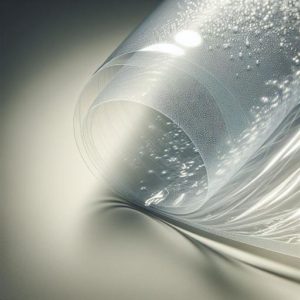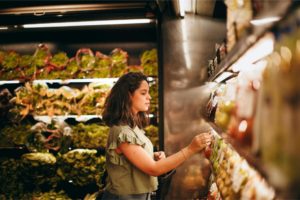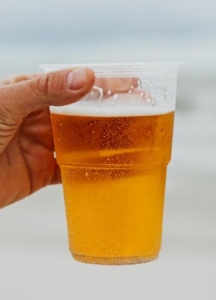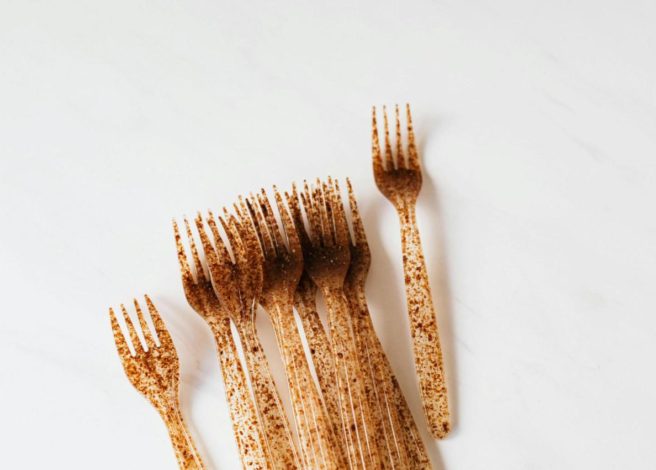At a Glance
- Bioplastics in food packaging seem eco-friendly, but they often need special composting facilities and don’t always meet shelf-life or performance needs.
- Conversion challenges exist, including cost premiums, supply uncertainty, and uncertain end-of-life effectiveness.
- Some bioplastics still rely on food crops, raising sustainability and ethical concerns.
- Brands benefit by fully vetting bioplastic claims, testing performance, and aligning with circular infrastructure before making the switch.
Today’s consumers are more aware than ever of packaging choices, and their opinions can quickly impact a company’s reputation. Food businesses now find their packaging decisions directly affecting customer loyalty and brand image. Traditional plastics such as PET (polyethylene terephthalate) and polypropylene are still widely used, but bioplastics in food packaging are now emerging as alternatives with both potential advantages and significant challenges. As these materials become more common, understanding their true performance capabilities, environmental impact, and cost implications is essential for making informed decisions that satisfy customer expectations while maintaining business profitability.
Let’s examine modern bioplastics and how they measure up against the usual crowd. It’s time to take a deeper look and get a clearer picture of what these materials bring to the table and if they could be the right (or wrong) fit for your business.
The New Players in the Bioplastics Game: PLA and PHA
 As the packaging industry grapples with sustainability demands, polylactic acid (PLA) and polyhydroxyalkanoate (PHA) (we’ll stick to acronyms for obvious reasons) are being marketed as alternatives to traditional materials. Bioplastics come from renewable sources like corn, sugar cane, and tapioca. This is different from petroleum-based options like PET and polypropylene. However, the truth is more complex than the “natural” marketing implies.
As the packaging industry grapples with sustainability demands, polylactic acid (PLA) and polyhydroxyalkanoate (PHA) (we’ll stick to acronyms for obvious reasons) are being marketed as alternatives to traditional materials. Bioplastics come from renewable sources like corn, sugar cane, and tapioca. This is different from petroleum-based options like PET and polypropylene. However, the truth is more complex than the “natural” marketing implies.
PLA is plant-based, but it goes through a lot of refinement. This is similar to high-fructose corn syrup — technically “natural,” yet highly processed. This processing is needed for stable food packaging. However, it creates a tricky balance between how well it works and its environmental benefits.
PHA is created by bacterial fermentation. It is highly biodegradable, which is beneficial. But it faces challenges, especially regarding clarity and stability. Many manufacturers are now experimenting with PLA-PHA blends to balance stability with biodegradability.
Bioplastics Performance Issues You Need to Know About
Food business owners need to be aware of several key performance factors:
Temperature sensitivity: PLA cannot handle high temperatures like traditional plastics. This makes it a poor choice for hot foods or storage in warm conditions. In a real-world terrifying scenario, imagine a customer being served hot soup in a container made of PLA. You would probably have to contend with more than a dry-cleaning bill. Early PLA products were known to melt during transport in hot conditions, though stability has improved significantly. They may also degrade in non–climate-controlled warehouse environments.
Structural integrity: Pure PLA can be brittle. This can cause packaging issues with containers that need complex design functionality. PHA blends can improve flexibility, but this comes at the cost of reduced clarity — a potential issue for products where visual appeal is crucial. And with food, this appeal is of the utmost importance. After all, customers buy with their eyes. 
Shelf life impact: Using PHA and PLA in food packaging affects shelf life by providing good barrier properties against moisture and gases. PLA is suitable for dry foods but less effective for high-moisture or fatty foods, and it can lose integrity at high temperatures. PHA offers superior water resistance and stability across varying temperatures, making it ideal for perishable foods.
Bioplastic Sustainability Is Complex
Here’s where things get messy. Everyone thinks bioplastics are the earth-friendly answer to our packaging problems, but the reality might surprise you. PLA breaks down faster than regular plastics. However, if you throw it in your backyard compost bin, you’ll wait long for results. Most home compost bins don’t reach high enough temperatures, so PLA will not break down effectively there. It can remain there for years without degradation. PLA is industrially compostable, meaning it will break down into carbon dioxide, water, and organic matter in commercial composting facilities that provide: high temperatures (around 140°F / 60°C), controlled humidity, oxygen and active microbial environments. Under these conditions, PLA typically breaks down within 60 to 90 days. However, there are very few industrial composting facilities equipped to support this process. Based on a BioCycle survey in 2018, there were only an estimated 28 facilities nationwide that can accommodate these conditions and accept compostable packaging.
More concerning for sustainability-focused businesses, PLA can actually disrupt recycling streams. Its density is similar to PET, which makes it hard to separate in automated recycling. This could contaminate traditional plastic recycling streams. As bioplastics in food packaging become more common, they could pose significant challenges to recycling infrastructure.
Are Bioplastics More Expensive than Traditional Plastics?
Bioplastic prices are decreasing, but they are still much more costly than standard plastics. This premium position means their use often relies on brand strategy. It also depends on the target market’s willingness to pay for sustainable options. Companies like Starbucks have successfully incorporated bioplastics into their packaging strategy in 14 states in February 2025, but this works largely because it aligns with their premium brand positioning and customer expectations.
Where Can Bioplastics Best Be Used?
 We are not here to completely write off bioplastics. They have their place. For food business owners, the key is strategic implementation:
We are not here to completely write off bioplastics. They have their place. For food business owners, the key is strategic implementation:
Cold beverages: PLA performs well in cold drink cups — ideal for quick-service restaurants and venues with controlled waste streams.
Short-term Use: Consider bioplastics for items with brief usage periods where traditional recycling isn’t practical.
Premium products: Align bioplastic packaging with premium offerings where higher costs can be justified through brand positioning. (There’s the answer to the question, ‘How much did you just pay for that iced coffee?!’)
Are Bioplastics Right for Your Business?
Here’s the truth: bioplastics in food packaging aren’t the villain or the hero of our story. They’re more like a promising rookie player who needs more time in the minors. While they show real potential in specific applications (those cold drink cups at your local stadium? PLA is crushing it there), they’re not ready to take over the whole game just yet.
Traditional PET and polypropylene are still your reliable veterans. They get the job done, they’re cost-effective, and there is more awareness of how to recycle them. But that doesn’t mean we should ignore bioplastics entirely. Smart business owners are finding selective ways to use them where they make sense — think short-term use products or premium brands where customers will pay a bit more for sustainability.
Are you interested in learning more about bioplastics in food packaging? Visit our Learning Center today! We are here to answer any questions you may have!

